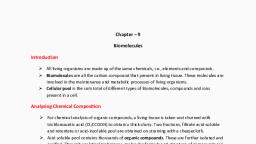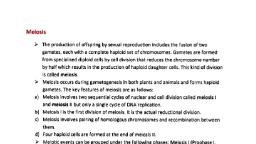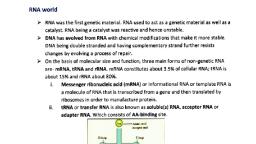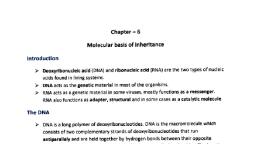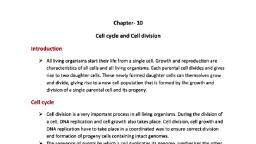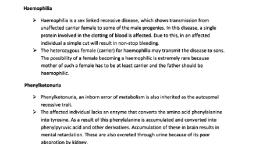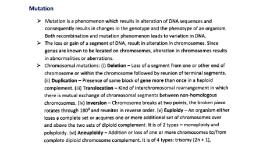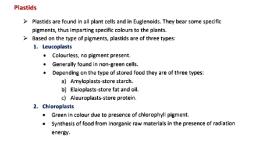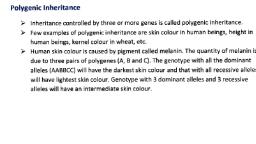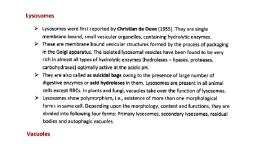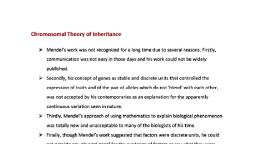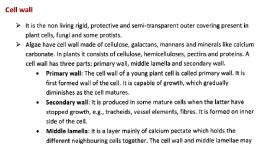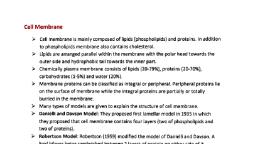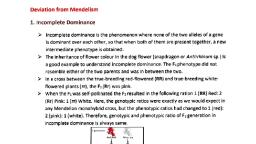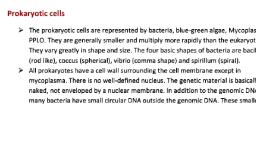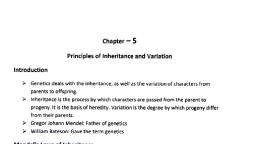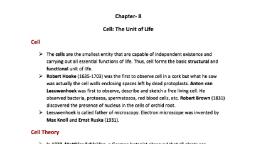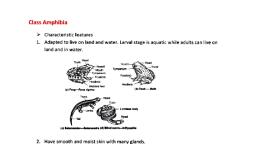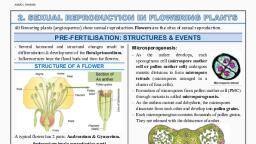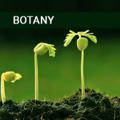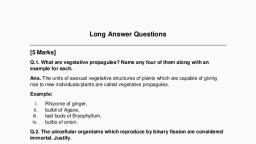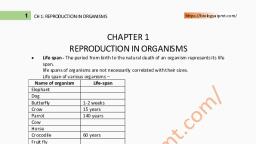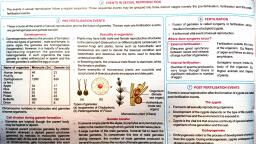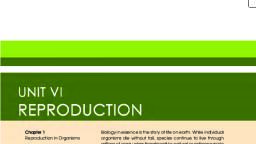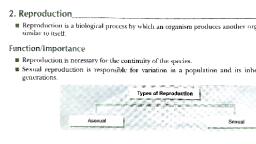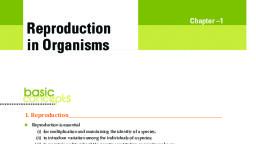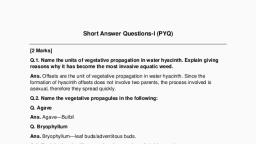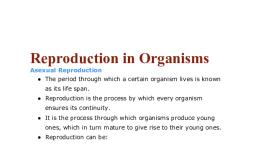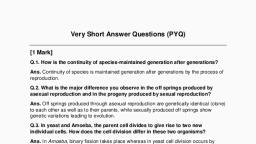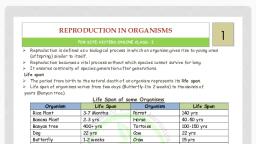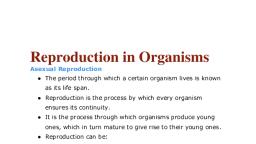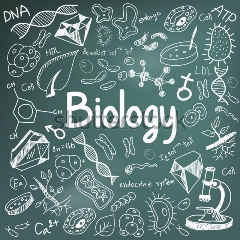Page 1 :
Sexual reproduction, ➢ It is the process of development of new individuals through the formation and fusion, of gametes., ➢ It is also called as amphimixis or syngenesis or amphigony., , Phases in Life Cycle, ➢ The life cycle of an organism is divided into 3 phases viz (i) juvenile phase, (ii) reproductive phase (iii) senescent phase., 1. Juvenile phase is a period of growth between their birth upto their reproductive, maturity. In plants, the period of growth between seed germination upto initiation of, flowering is called vegetative phase. The juvenile phase is of variable duration in different, organisms., 2. In Reproductive phase, the organisms reproduce offspring. Appearance of flowers in, higher plants indicates sexual maturity., ➢ Types of flowering plants:, a) Monocarpic plants flower only once in their life. After flowering they, produce fruits and die. All annuals (e.g., wheat, rice) and biennial plants (e.g.,, carrot, radish) are monocarpic. A few perennial plants are also monocarpic., b) Polycarpic plants are perennial and flower repeatedly at intervals every year, (e.g., apple, mango, orange, grapevine). Very few perennial plants have, flowers throughout the year (e.g., china rose), ➢ A few plants show unusual flowering behaviour- certain bamboo species, flower only, once in their life, usually after 50-100 years. They produce large number of fruits and, then die. Strobilanthus kunthiana flowers once in 12 years., ➢ On the basis of time of breeding, animals are of two types:, a) Seasonal breeders: They reproduce at particular period of the year such as, frog, lizards, most birds, deer, etc., b) Continuous breeders: These animals continue to breed throughout their, sexual maturity, e.g., honeybee queen, poultry, rabbit, mice, cattle, etc., ➢ In females of placental mammals, there are cyclical changes in ovaries, accessory, reproductive ducts and hormones during the reproductive phase. These are of two, types:, a) In primates (monkey, apes and humans) such cyclical changes during, reproductive phase constitute menstrual cycle., b) In non-primates mammals like cows, sheep, rats, deer, dogs, tiger, etc., such, cyclical changes during reproduction forms oestrus cycle.
Page 2 :
3. Senescent phase begins at the end of the reproductive phase when degeneration sets in, structure and functioning of the body. Senescence is the last phase of life span. It ultimately, leads to death., ➢ In both plants and animals, hormones are responsible for the change over from one, phase to another. Hormones and certain environmental factors regulate the, reproductive processes and the behaviour of the organisms., , Sexuality in organisms:, ➢ In most primitive sexually reproducing organisms, there is no morphological or, physiological difference in the functional gametes. The gametes belong to the same, parent. Such organisms are called homothallic and monoecious e.g., Mucor mucedo., ➢ When the functional gametes belong to different parents and there is no, morphological or physical difference, these organisms are called heterothallic and, dioecious, e.g., Rhizopus stolonifer., ➢ In most flowering plants, both male and female sex organs occur in the same flower., Such plants are called hermaphrodite or bisexual, e.g., sweet potato. In some, flowering plants, male flowers (staminate flowers) and female flowers (pistillate, flowers) are borne on different plants. These plants are called dioecious plants, e.g.,, papaya, date palm., ➢ When both male and female flowers are present on the same plants they are called, monoecious plants, e.g., maize, coconut, cucurbits. Chara often bears both male, (antheridium) and female (oogonium) sex organs. Marchantia, a liverwort is, dioecious. Here, the female plant bears archegonia over the archegoniophore. The, male plant has antheridia over the antheridiophore., ➢ In some lower animals both male and female sex organs are present in the same, individual, such animals are called hermaphrodite or bisexual, e.g., tapeworm,, earthworm and leech. Most of animals are unisexual with distinct male and female, individuals, e.g., Ascaris, cockroach, frog, birds and mammals., ➢ Gametes in all heterogametic species are of two types: male and female. Gametes, are always haploid, though the parent plant body from which they arise may be, either haploid or diploid., ➢ Many organisms belonging to monera, fungi, algae and bryophytes have haploid, plant body., ➢ Organisms belonging to Pteridophytes, gymnosperms, angiosperms and most of, animals including human beings, the parental body is diploid. In a diploid body to, produce haploid gametes, meiosis, i.e., reduction division takes place. In diploid, organisms, specialised cells called meiocytes undergo meiosis. At the end of meiosis,, only one set of chromosomes gets retained in each gamete.
Page 3 :
Events in Sexual Reproduction, ➢ The events of sexual reproduction may be grouped into three distinct stages namely,, the pre-fertilisation, fertilization and the post-fertilisation events., Pre-fertilisation events, ➢ These are the events of sexual reproduction which take place before fusion of, gametes. These include, gametogenesis and gamete transfer., , (i) Gametogenesis, ✓ The process of formation of gametes is known as gametogenesis. The reproductive, units in sexual reproduction are specialised cells called gametes., ✓ In some lower plants (e.g., in some algae), the two gametes are morphologically, similar, such gametes are called isogametes., ✓ When male and female gametes are morphologically distinct, they are called, anisogametes. In such organisms, male gametes are called microgametes or, antherozoid/sperm and female gametes are termed as macrogametes or ova., , (ii) Gamete transfer, ✓ In most organisms, male gamete is motile and female gamete is non-motile. In algae,, bryophytes and pteridophytes, water serves as the medium through which gamete, transfer takes place., ✓ Since several male gametes fail to reach the female gametes, hence the male, gametes are produced in large number., ✓ In seed plants, pollen grains are carrier of male gametes and ovule have the eggs., ✓ In bisexual, self-fertilisation plants, e.g., peas, transfer of pollen grains to the stigma, is relatively easy as anthers and stigma are located close to each other., ✓ In cross pollinating plants, a specialised event called pollination facilitates transfer of, pollen grains to the stigma. Pollen grains germinate on the stigma and pollen tubes, carrying the male gametes reach the ovule and discharge male gametes near the, egg., ✓ Successful transfer and coming together of gametes is essential for the most critical, event in sexual reproduction, the fertilisation., , Fertilisation, ➢ The most vital event of sexual reproduction is the fusion of gametes. This process is, also called syngamy and it results in the formation of a diploid zygote., ➢ In most aquatic organisms, such as a majority of algae and fishes as well as, amphibians, syngamy occurs in the external medium. This type of gametic fusion is, called external fertilisation.
Page 4 :
➢ Organisms exhibiting external fertilisation show great synchrony between the sexes, and release a large number of gametes into the surrounding medium in order to, enhance the chances of syngamy., ➢ In many terrestrial organisms, belonging to fungi, higher animals such as reptiles,, birds, mammals and in a majority of plants, syngamy occurs inside the body of the, organism, so it is called internal fertilisation., ➢ In all these organisms, egg is formed inside the female body where they fuse with, the male gamete. In organisms exhibiting internal fertilisation, the male gamete is, motile and has to reach the egg in order to fuse with it. In seed plants, however, the, non-motile male gametes are carried to female gamete by pollen tubes., ➢ In some organisms like rotifers, honeybees and even some lizards and birds, the, female gamete undergoes development to form new organisms without fertilisation., This phenomenon is called parthenogenesis. Parthenogenesis may be artificial and, induced., , Post-fertilisation events, ➢ Events in sexual reproduction after the formation of zygote are called postfertilisation events. These events include development in zygote and, embryogenesis., , (i) The zygote, ➢ Formation of the diploid zygote is universal in all sexually reproducing organisms. In, organisms with external fertilisation, zygote is formed in the external medium,, whereas in those exhibiting internal fertilisation, zygote is formed inside the body of, the organisms., ➢ In fungi and algae, zygote develops a thick wall that is resistant to dessication and, damage. It undergoes a period of rest before germination. In organisms with, haplontic life cycle, zygote divides by meiosis to form haploid spores that grow into, haploid individuals. Haplontic life cycle occurs in many algae and fungi., ➢ In most organisms, zygote does not take rest. It divides by mitosis first forming a, diploid embryo and then the individual which is also diploid. It leads to a diplontic, life cycle. Diplontic life cycle occurs in higher animals and seed bearing plants., ➢ In most plants, the gametophyte which is haploid produces gametes by mitosis, it, leads to diplohaplontic life cycle. Diplohaplontic life cycle occurs in bryophytes,, pteridophytes and some algae., , (ii) Embryogenesis, ➢ Embryogenesis refers to the process of development of embryo from the zygote., During embryogenesis, zygote undergoes cell division and cell differentiation. Cell, divisions increase the number of cells in the developing embryo and cell
Page 5 :
➢, ➢, , ➢, ➢, , ➢, , differentiation helps groups of cells to undergo certain modifications to form, specialised tissues and organs to form an organism., On the basis of the development of the zygote inside or outside of the female, organism, animals are grouped into oviparous, viviparous and ovoviviparous., The oviparous animals such as reptiles and birds lay fertilized eggs covered by a hard, calcareous shell. These are laid in a safe place, after incubation young ones hatch, out., In viviparous animals such as majority of mammals including human beings, the, zygote develops into a young one inside the body of the female individual., In ovoviviparous animals, the female retains the egg inside its body after fertilisation, and allows the development of the embryo inside the body without providing extra, nourishment to the developing embryo as the placenta is absent e.g., sharks and, rattle snakes., In flowering plants, the zygote is formed inside the ovule of the female sex organs., The fertilized ovule matures and gets converted into seeds. The wall of the ovary, produces the pericarp. The ripened ovary enclosing the seeds forms fruits. After, dispersal the seed germinate to form new plants., , Advantages of Sexual Reproduction, ➢ Since fusion of gametes from different parents occurs during sexual reproduction,, hence genetic recombination takes place causing variations., ➢ Variation being a major factor of natural selection, therefore, it plays an important, role in evolution., ➢ The offspring produced due to sexual reproduction adapt better to the changing, environmental conditions., , Disadvantages of Sexual Reproduction, ➢ It is usually biparental., ➢ It is slow process and requires a lot of time., ➢ Fertilisation has a chance factor.

